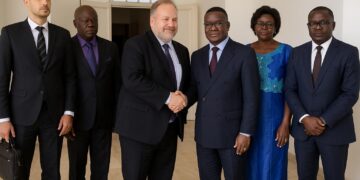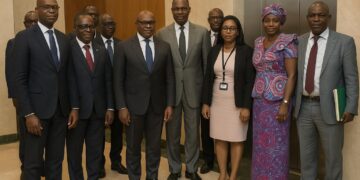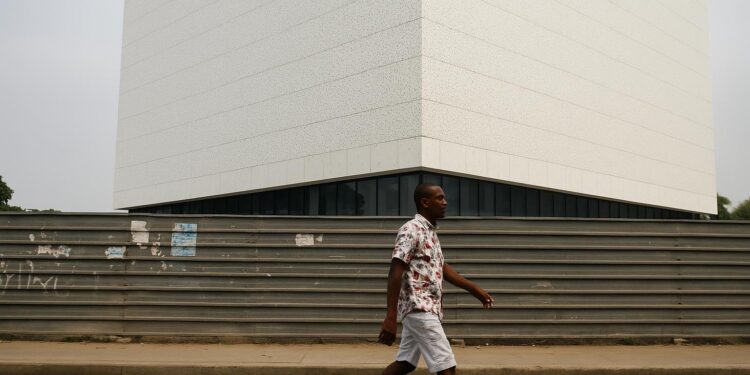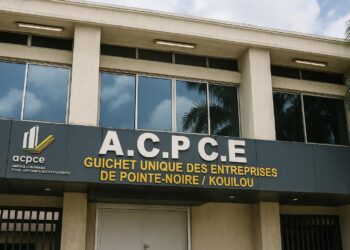Funding gap slows 95% complete facility
Work on Congo-Brazzaville’s national data centre, now roughly 95 percent complete, has paused because the public treasury has yet to release the final tranche of co-financing agreed with the African Development Bank, according to officials involved in the project.
The Chinese contractor Sumec, which won the civil-works contract, warned on 15 October that it might dismantle equipment and leave the site unless the remaining payment is transferred before month-end, potentially turning the flagship building into an unfinished, idle structure.
Strategic asset for digital sovereignty
Rising beside the former UAPT complex opposite La Milice camp in Bacongo district, the three-storey facility, topped by a technical basement, is designed to store, host and process all state and private digital information generated in the Republic of Congo.
Officials say the data centre will underpin national cyber-security, support local application development and give the wider Central African sub-region a neutral, in-country alternative to overseas cloud servers, reinforcing policy goals of technological self-reliance.
African Development Bank timeline pressures
The African Development Bank, main lender to the project, has already adjusted its disbursement schedule several times; executives caution that further deviations could affect the institution’s own portfolio calendar and complicate commitments in other Congolese infrastructure programmes.
A senior AfDB representative who inspected the site with the telecom minister three months ago expressed disappointment that virtually the same progress report was presented during this month’s follow-up visit.
Government outlines remedial path
Telecom and Digital Economy Minister Léon Juste Ibombo acknowledged the budgetary delay but assured Sumec that he will escalate the file to the Prime Minister’s office, arguing that timely completion aligns with the administration’s Digital Transformation Plan.
The minister emphasised that the halt is not a policy reversal but a temporary cash-flow issue inside the national counterpart financing envelope, a situation he believes can be resolved before the contractor’s ultimatum expires.
Market implications for telecom and cloud
Industry observers note that a fully operational Tier-III-equivalent facility could lower latency for domestic mobile operators, foster fintech innovation and attract diaspora entrepreneurs seeking compliant hosting options for e-commerce platforms.
Any protracted suspension, however, risks deterring private investors who monitor project execution as a proxy for state reliability in future public-private partnerships, including planned fibre backbones and special economic zones.
Risk management and contractor stance
Sumec managers argue they entered the contract on the assumption that counterpart funds would flow concurrently with AfDB tranches, enabling them to mobilise specialised equipment and expatriate technicians without cash-flow stress.
While the company reiterated readiness to finish the remaining five percent within forty-five days of payment, it is reportedly preparing demobilisation scenarios, including storage of sensitive hardware off-site, to protect warranties and insurance coverage.
Outlook for investors and regional partners
Most analysts still expect a negotiated solution, citing previous instances in which the Treasury released blocked counterpart funds once projects reached a critical stage.
Congolese authorities have an interest in avoiding cost overruns that could arise from site re-mobilisation, exchange-rate drift or penalty clauses, especially as the public-capital budget already faces competing social and climate commitments.
Regional telecom ministers, who view the data centre as a shared asset for cross-border fibre traffic, may also lobby for a quick settlement to ensure alignment with the Economic Community of Central African States’ digital roadmap.
For now, attention turns to the upcoming budget session in Brazzaville, where legislators could approve a supplementary allocation under the existing AfDB loan agreement, providing the liquidity needed to complete commissioning tests and energy redundancy checks.
Should the funds be released and construction resume, project managers project commercial go-live within the first quarter following handover, positioning Congo-Brazzaville to secure sensitive datasets domestically and to strengthen its appeal as a regional digital hub.
Financing architecture and policy context
The project’s financial structure pairs a sovereign AfDB loan with a national counterpart contribution earmarked in the 2023 capital budget, reflecting Congo’s broader approach to blended financing for digital infrastructure.
Such splitting of payments allows international lenders to mitigate risk while requiring local authorities to demonstrate fiscal ownership; however, delays on the domestic side can trigger cross-default clauses if not remedied within agreed cure periods.
Environmental safeguards and energy backup
Design documents reviewed by technicians include redundant power rooms, in-row cooling and fire-suppression systems aligned with AfDB environmental guidelines, aiming to ensure high availability even amid Brazzaville’s periodic grid fluctuations.
Local solar integration and diesel generators are planned for the final phase, a configuration that blends reliability with the government’s climate commitments under its Nationally Determined Contribution.
Stakeholder communication and next steps
The ministry is drafting a brief outlining the payment timetable, technical milestones and an indicative commissioning date, which will be circulated once endorsed by the Council of Ministers.
Successful closure would create momentum for forthcoming initiatives such as a planned e-government platform and national identification database, both of which are slated to rely on the data centre’s secure server rooms.
In the broader narrative of Congo-Brazzaville’s economic diversification, delivering the data centre on schedule would signal that the country can execute complex, technology-intensive infrastructure in partnership with global financiers.












































